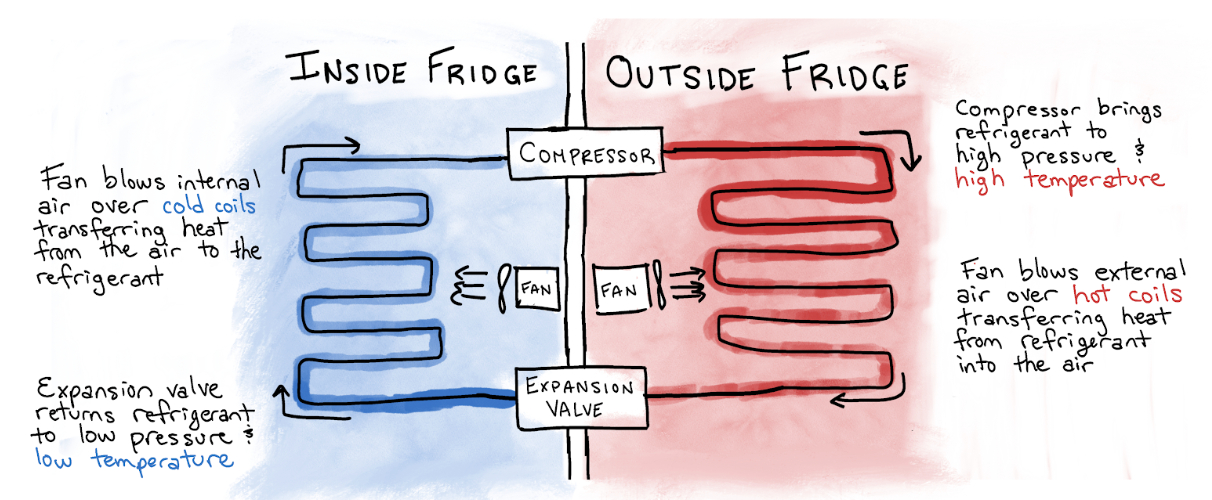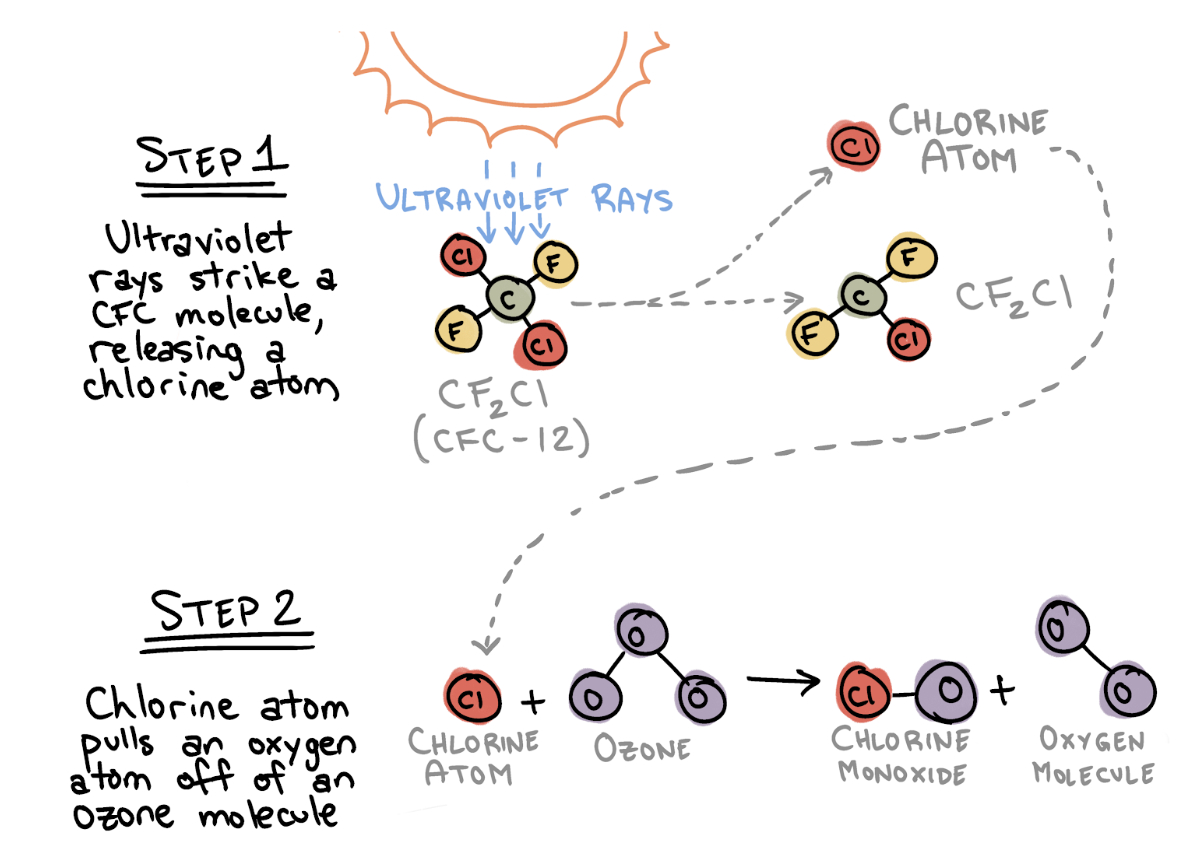
Sponsored By: Reflect
This essay is brought to you by Reflect, an ultra-fast notes app with an AI assistant built in directly. Simplify your note-taking with Reflect's advanced features, like custom prompts, voice transcription , and the ability to chat with your notes effortlessly. Elevate your productivity and organization with Reflect.
One of my gripes with the technology industry is how billionaires think of themselves as John Galt from Ayn Rand’s Atlas Shrugged. They lionize independence and get grumpy about any form of regulation. This view is, of course, misguided. While technology is the best lever we have to improve human existence, we still need a hand to push down on that lever. Government intervention, properly applied, is how frontier technologies get used. That’s why this brilliant piece by former Figma engineer Jamie Wong struck me so deeply. He explores how we fixed the ozone layer, not with privately built technology alone, but with global partnerships devoted to helping the planet. While we may all enjoy the riches that come from the success of big tech companies, the whole point of this industry is to make people’s lives better. This piece (which is part one of a two-part article) is a reminder about how frontier tech can do that.—Evan Armstrong
In a demonstration at the 1930 meeting of the American Chemical Society, a chemical engineer named Thomas Midgley, Jr. took a deep breath, inhaled a novel compound deep into his lungs, and held it briefly before exhaling and blowing out a candle. It was theatric proof of two key properties of a new product—the stuff was safe to breathe in and wasn’t flammable.
A few years earlier, Midgley had been tasked by the Frigidaire, then part of General Motors, to address a problem holding back widespread adoption of home refrigerators. Electric refrigerators, which had been available for household use since 1915, were becoming financially attainable for many American homeowners, but a key component was giving many homeowners pause: refrigerants, the substances pumped from the inside of the refrigerator to the outside and back in an infinite loop.
All illustrations courtesy of the author.
Before Midgley’s discovery, the popular options for refrigerants were plagued by one of two problems. Some, such as ammonia, were toxic, making them unappealing in homes for obvious reasons. Others, including butane, were flammable, rendering them worrisome in a kitchen with a wood- or coal-powered stove.
Through his showy demonstration, Midgley hoped to lay to rest any concerns around flammability and toxicity. The gambit worked.
Later that year, General Motors and DuPont jointly formed Kinetic Chemicals and started production of Freon-12 (or R-12), the substance Midgley huffed. It was the first of a class of refrigerants collectively known as chlorofluorocarbons, or CFCs.
Freon quickly became a market leader used in refrigerators and air conditioning units. By the early 1940s, Midgley was one of the most celebrated chemical engineers in the United States, decorated with industry awards. In 1944,14 years after huffing Freon, he was elected president and chairman of the American Chemical Society.
However, that demonstration was not his first.
Finding hope in climate doom
With a never-ending deluge of climate doom in the news, it’s easy to feel jaded or hopeless. Nothing is improving, nobody is doing anything, and there’s nothing I can do.
But, as John Green noted in The Anthropocene Reviewed, "Despair isn't very productive. That's the problem with it. Like a replicating virus, all despair can make is more of itself."
I admit I’m not an optimist by nature, so after I left Figma—where I spent over five years as one of the first engineers—to explore what role I could play in stabilizing our climate, I went in search of optimism.
I wanted to dig beyond the melting glacier narrative and vague we can do it! platitudes. I wanted to see what real solutions looked like and find the people who believe they can personally bend the arc of history.
I read Bill Gates’s How to Avoid a Climate Disaster, Saul Griffith’s Electrify, and Gretchen Bakke’s The Grid—all books focused on honestly assessing where we stand in combating our warming climate, pointing at the technologies ready for deployment, pending research breakthroughs, and those we need to move on from. I listened to the archives of How to Save a Planet and My Climate Journey, two podcasts featuring interviews with people at the forefront of climate solutions. Then I began sheepishly introducing myself to climate tech founders as an angel investor.
In the process of running due diligence before I ultimately wrote my first check to a company called Recoolit, I found two main sources of optimism —one from the public sector’s triumph over the catastrophic outcomes of an unmitigated hole in the ozone layer, and one from the ambitions and progress of Recoolit itself.
Recoolit’s story will come at a later point, but today I’d like to share that first story—the triumphs of scientists and regulators in finding and fixing the ozone hole. I feel compelled to share these stories—to spread that optimism—because narratives stick to our collective consciousness in ways that charts, graphs, and statistics rarely do.
Despite the barrage of climate doom, there are, in fact, success stories from decades of environmental action—ones in which we do steer our home planet away from the proverbial iceberg. We’re just not very good at telling them, because sometimes the solution looks less like the Avengers battling Thanos and more like a woefully dry policy document stipulating the details of a 20-year plan.
The history of the ozone hole offers one of those stories—a near-catastrophe that dominated headlines in the 1980s and ’90s, and then disappeared from public consciousness as we ameliorated the problem.
Not so long ago, the term “ozone hole” evoked a vague feeling of concern, but I had no answers to the most basic questions: What exactly is the ozone hole? What caused it? Why was it such a big deal? What did we do about it? And why don’t we hear about it any more?
In answering those questions, we’ll uncover a century-spanning conflict featuring a Nobel laureate, an Antarctic expedition, and the only international policy ratified by every country on Earth. We’ll take pit stops at all of these curiosities, but for now, let’s start with the man who Georgetown University environmental historian J. R. McNeill said had a "more adverse impact on the atmosphere than any other single organism in Earth's history."
A one-man environmental disaster
In 1924, six years before inhaling Freon, Midgley held a press conference to calm fears about an earlier product he had developed: tetraethyl lead, an additive to gasoline that allowed car engines to run more quietly. The year before, a new chemical plant was proving disastrous for workers’ health. Within the first two months of operation, 12 employees had fallen sick with lead poisoning. Five died.
At the press conference, Midgley poured tetraethyl lead on his hand and breathed the fumes for a full minute. He claimed he could do this every day without consequence.
Midgley knew he was lying. A year before the press conference, as plant workers were getting sick and dying, he took an extended vacation to Miami to try to cure himself of lead poisoning. In a letter to the American Chemical Society explaining why he couldn’t attend a gathering to celebrate his discovery of tetraethyl lead, Midgley wrote, "After about a year's work in organic lead I find that my lungs have been affected and that it is necessary to drop all work and get a large supply of fresh air."
When presented with an inconvenient truth about his hyper-profitable first invention, Midgley was more than happy to bend the truth for personal gain. It’s unclear whether he knew that breathing in CFCs would be equally irresponsible, but that first demonstration showed how little he cared to find out.
Still, it’s somewhat astounding that a man with such blatant disregard for public health would knowingly cause one public health crisis and then maybe accidentally, but equally recklessly, cause another. Midgley had “an instinct for the regrettable that was almost uncanny,” as Bill Bryson put it in A Short History of Nearly Everything.
The perils of Midgley’s second invention—CFCs—wouldn’t be appreciated until nearly 50 years after he blew out the candle.
Detroit, Michigan, 1941. Buying refrigerators at the Crowley-Milner department store. Photograph by Arthur S. Seigel (Library of Congress).
A prediction about the end of the world
Years, then decades, passed with an explosion in sales of air conditioners and refrigerators. They moved from being technological curiosities to household staples. From 1930 to 1970, adoption of refrigerators in American homes rose from 13 to 99.8 percent, constituting hundreds of millions of sales. Unbeknownst to millions of homeowners, this cooling hardware was teeing up an environmental disaster that would penetrate the global consciousness.
It took a chain of discoveries stretching over two decades to confirm the threat. The first domino was toppled by a scientific paper that pointed out that every molecule of CFC ever produced had stayed in the atmosphere.
When University of California, Irvine professor Frank Rowland read this paper, alarm bells rang in his head. As an atmospheric chemist, he realized that CFCs, which were lighter than air, would drift higher and higher in the atmosphere until they found themselves in the ozone layer—a layer of the stratosphere rich in ozone, a gas whose molecular form contains three oxygen atoms instead of the regular two. The ozone layer protects earth from the full brunt of the sun’s ultraviolet rays.
Rowland had an intuition that the presence of CFCs in the ozone layer spelled trouble. At high altitudes, one molecule of CFC would decompose when hit by ultraviolet light, freeing an atom of chlorine. The chlorine atom would then tear an oxygen atom off an ozone molecule, effectively destroying that ozone molecule.
The Only Subscription
You Need to
Stay at the
Edge of AI
The essential toolkit for those shaping the future
"This might be the best value you
can get from an AI subscription."
- Jay S.
Join 100,000+ leaders, builders, and innovators

Email address
Already have an account? Sign in
What is included in a subscription?
Daily insights from AI pioneers + early access to powerful AI tools










Comments
Don't have an account? Sign up!
What an amazing article. Thank you.🙏